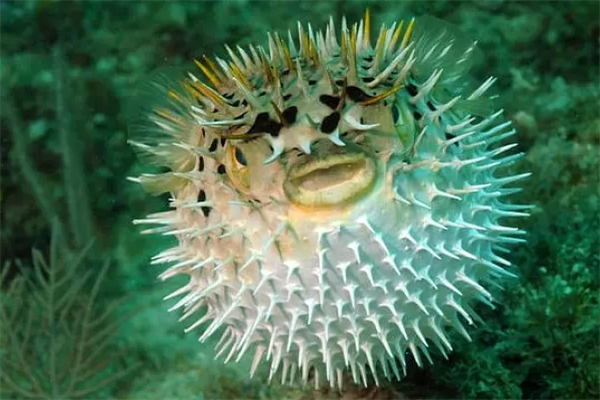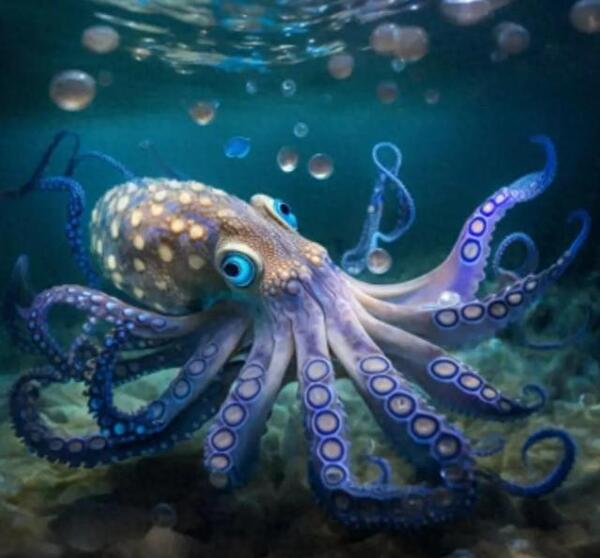The ocean is not only filled with spectacular beauty, but it also hides some extremely venomous and dangerous creatures. Understanding these creatures is crucial for divers, swimmers, and marine biologists. In this article, we will take a deep dive into the most venomous and dangerous marine creatures, their characteristics, distribution, and how to avoid them.

Stonefish is considered one of the most venomous fish in the world. They have a rocky appearance and live in shallow waters of the Indian and Pacific Oceans. The stonefish has 13 sharp venomous spines on its back. If stepped on, the victim will feel extremely painful and may cause muscle paralysis, shock, and even death. How to avoid: Wear shoes when walking in the ocean and pay attention to rock-like objects on the seabed.
Although the Blue-Ringed Octopus is small (only the size of a golf ball), its venom is deadly. Found in the Indian and Pacific Oceans, the venom of this small octopus can cause breathing difficulties and cardiac arrest within minutes. There is currently no antidote, so its bite is very dangerous. How to avoid: Avoid touching octopuses with blue halos on their bodies. They usually hide in coral reefs and rock crevices.
Box jellyfish are one of the most venomous creatures in the ocean and are commonly found in Australian waters. This transparent jellyfish has long tentacles and its venom can attack the heart, nervous system and skin cells. Within minutes of poisoning, victims may suffer cardiac arrest or respiratory failure. Avoidance: Pay attention to sign warnings when swimming at Australian beaches and wear protective swimwear.
Lionfish are known for their unique appearance and gorgeous fins, but their stingers are hidden in these beautiful fins. Although lionfish venom is not fatal, it can cause intense pain, dizziness, nausea and difficulty breathing. Avoidance: Keep a safe distance from lionfish when diving and avoid direct contact with their fins.
Sea snakes are far more venomous than most land snakes, especially Belcher's sea snakes, whose venom is so potent that it can kill within minutes. Fortunately, most sea snakes are gentle and usually attack only when threatened. Avoidance: Keep your distance from sea snakes and avoid teasing or touching them.
Although stingrays are generally docile marine creatures, they can defend themselves with the stingray on their tails if threatened. This stingray can penetrate the skin and inject venom, causing serious damage. Although the venom is usually not fatal, improper wound care can lead to infection. Avoidance: When walking in the ocean, try to drag your feet to avoid stepping on stingrays.
Watch for signs: Before heading to the beach or diving area, look for local marine life warning signs.
Wear protective gear: Wearing protective clothing and diving shoes can effectively reduce the risk of injury, especially when diving or swimming in coral reef areas.
Avoid direct contact: Whether it is reefs, fish or other marine life, avoid touching them directly with your hands.
The ocean is a world full of mystery and danger. Knowing the most toxic and dangerous marine life and the environments in which they live can help us stay safe while exploring the ocean. For any marine injury, it is important to seek medical help quickly, especially after being attacked by these creatures.
With this article, you can not only improve your understanding of marine life, but also keep yourself and others safe in the ocean. If you plan to dive or travel in the ocean, it is important to know about these dangerous creatures.

Although some dangerous aquarium/52-marine-animals.html">marine animals are extremely venomous, not all venomous creatures are inedible. However, consuming these creatures can be extremely risky, especially if they are not properly handled or accidentally ingested. The following are some common poisonous aquarium/52-marine-animals.html">marine animals that are edible and suggestions for treatment after ingestion.
Edible: Stonefish is edible, especially in Japan, where professionally processed stonefish are used in delicacies such as sashimi and sushi. However, the venomous spines on the back of stonefish must be carefully removed before cooking to prevent poisoning.
Ingestion treatment: If you are accidentally stung by a stonefish, you should immediately soak the injured area in hot water (40-45°C) because the stonefish toxin is sensitive to heat. After that, you need to go to the hospital immediately for professional treatment, and anti-venom serum may be required.
Edible: This octopus is extremely toxic and cannot be eaten. Its venom contains the deadly tetradotoxin, which can be fatal even if ingested in small amounts.
Ingestion treatment: If you accidentally ingest a poison dart frog octopus or are stung by it, call emergency services immediately. Victims may experience breathing difficulties or even cardiac arrest within a few minutes. Since there is currently no specific antidote, treatment should be supportive, including respiratory assistance and maintaining vital signs.
Eatable: Box jellyfish are not edible. Their tentacles contain extremely dangerous toxins, and even a slight contact can cause serious health problems.
Ingestion treatment: If you are stung by a box jellyfish, immediately rinse the wound with vinegar to reduce the spread of the venom. Avoid using fresh water or wiping the wound, as this will cause more venom to be released. Go to the hospital as soon as possible for further treatment.
Eatable: Lionfish can be eaten after proper preparation. Its meat is delicious and is often found on restaurant menus in the Caribbean and the East Coast of the United States. However, lionfish fins contain venomous spines and must be handled with caution.
Ingestion treatment: Although the toxins in the sting of lionfish are not fatal, they may cause severe pain and other symptoms. Victims should immerse the injured area in hot water and go to the hospital for treatment as soon as possible.
Eatable: Sea snakes are considered a delicacy in some parts of Southeast Asia, but they must be prepared by professional chefs to remove their venom glands. Sea snake venom that is not properly processed is extremely threatening to humans.
Ingestion treatment: If you ingest a sea snake venom gland or are bitten by one, go to the hospital as soon as possible. Antivenin is the most effective treatment, and supportive care includes maintaining respiratory and cardiovascular function.
Eatable: Stingray is edible, especially in parts of Southeast Asia and South America, where its meat is considered a delicacy. However, be careful to remove the stingray from the tail before cooking.
Ingestion treatment: If you accidentally touch the stingray, clean the wound immediately and soak it in hot water. In severe cases, seek medical attention to prevent infection and complications.
Stop eating immediately: Once you find that you have ingested poisonous marine life, you should stop eating immediately and try to vomit out the remaining food.
Seek medical help: Even if the symptoms are not obvious at the moment, you should go to the hospital as soon as possible. The toxins of some marine life may have a delayed effect.
Drink a lot of water: If there is no strong vomiting or poisoning reaction, drinking a lot of water can help dilute the toxins in the body, but do not try to induce vomiting on your own.
Monitor symptoms: After ingesting poisonous organisms, common symptoms include: nausea, vomiting, abdominal pain, paralysis, difficulty breathing, etc. If you experience these symptoms, it is important to seek medical attention immediately.
Understanding the toxicity of these marine organisms and how to deal with them can help people enjoy the ocean more safely while avoiding unnecessary health risks.
animal tags: dangerous Stonefish Blue-Ringed-Octopus Stingray
We created this article in conjunction with AI technology, then made sure it was fact-checked and edited by a Animals Top editor.